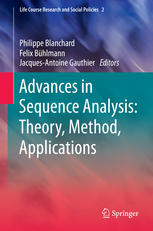

Most ebook files are in PDF format, so you can easily read them using various software such as Foxit Reader or directly on the Google Chrome browser.
Some ebook files are released by publishers in other formats such as .awz, .mobi, .epub, .fb2, etc. You may need to install specific software to read these formats on mobile/PC, such as Calibre.
Please read the tutorial at this link: https://ebookbell.com/faq
We offer FREE conversion to the popular formats you request; however, this may take some time. Therefore, right after payment, please email us, and we will try to provide the service as quickly as possible.
For some exceptional file formats or broken links (if any), please refrain from opening any disputes. Instead, email us first, and we will try to assist within a maximum of 6 hours.
EbookBell Team

4.0
86 reviewsThis book gives a general view of sequence analysis, the statistical study of successions of states or events. It includes innovative contributions on life course studies, transitions into and out of employment, contemporaneous and historical careers, and political trajectories. The approach presented in this book is now central to the life-course perspective and the study of social processes more generally.
This volume promotes the dialogue between approaches to sequence analysis that developed separately, within traditions contrasted in space and disciplines. It includes the latest developments in sequential concepts, coding, atypical datasets and time patterns, optimal matching and alternative algorithms, survey optimization, and visualization.
Field studies include original sequential material related to parenting in 19th-century Belgium, higher education and work in Finland and Italy, family formation before and after German reunification, French Jews persecuted in occupied France, long-term trends in electoral participation, and regime democratization.
Overall the book reassesses the classical uses of sequences and it promotes new ways of collecting, formatting, representing and processing them. The introduction provides basic sequential concepts and tools, as well as a history of the method. Chapters are presented in a way that is both accessible to the beginner and informative to the expert.